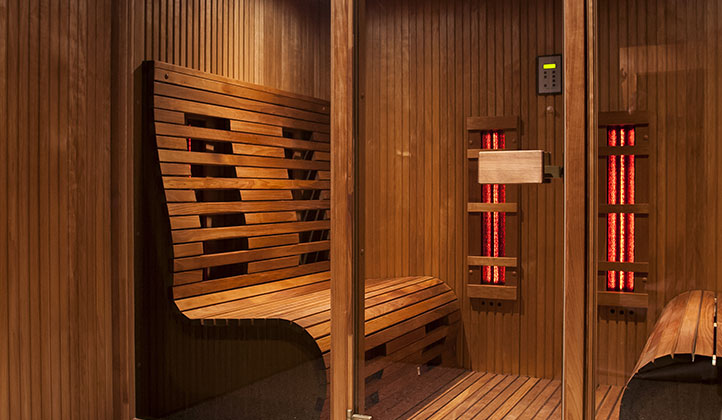The two sauna types, traditional and far-infrared, are both excellent choices in many aspects and it will be up to the consumer to know which fits their lifestyle better.
The traditional sauna found in North America is usually located in the basement of the house or then as a separate building at the cottage. The temperatures can go fairly high and can cause strong burning sensations on the skin (which is something Finnish people expect as a sign of a good sauna). Extreme humidity is caused by throwing water on the hot heater rocks, which in turn gives off large amounts of steam. The scorching heat and the nasal passage clearing steam are very invigorating. Those that don’t want these extremes can always sit on the lower bench (traditionally, saunas are built with an upper and lower bench).
The traditional sauna can be a very social place as they are can normally accommodate at least a few people. Initial heating time takes between 30 to 40 minutes. The time for a sitting session inside the sauna is usually only about 15 minutes. The user has full control over both heat and humidity to deliver the best experience.
The initial installation of a traditional sauna does requires a medium or large available space and a dedicated circuit breaker. There is a risk of getting burned by falling and accidentally touching the electric heater or stove although some will put a wire cage or wooden barrier around the heater to prevent this.
Far-infrared saunas can be had that are just large enough for one person and can be plugged into a standard power outlet. The smaller one can be easily assembled and do not require professional assistance. The larger ones that can handle 3 or more people will need to be plugged into a higher amperage outlet.
The lower heat that is generated is not the skin-searing kind that the traditional sauna provides but penetrates much deeper in a short amount of time. That being said, there is no steam or extra humidity in the infrared sauna which is one of the best features of the traditional sauna. The heat is generated by special panels around the walls.
The infrared sauna can technically be turned on and used immediately but many people prefer to have it heated for about 10 minutes first. A sitting session usually lasts up to 30 minutes.
Overall, it will consume less energy but even with a traditional sauna, that is negligible. An infrared sauna should not be used by those with any kind of silicone implants but metal implants are usually safe. Always ask your doctor first if you have any concerns.
So no matter which type you prefer, they both share the benefits of providing stress relief, relaxation, pain relief and sweating. Neither require much maintenance, as a wipe-down cleaning of the bench and walls is adequate. But remember that both can be dangerous if your body gets overheated and not enough liquid is consumed to stay hydrated (do not drink alcohol for this as it will just dehydrate you faster).
